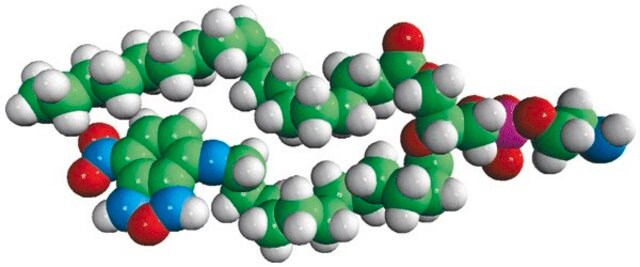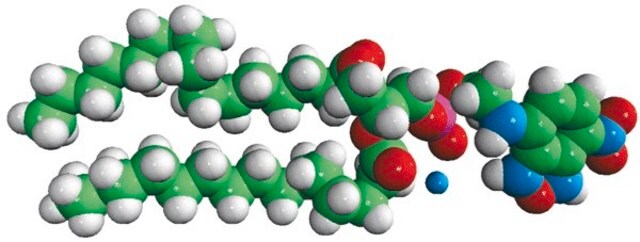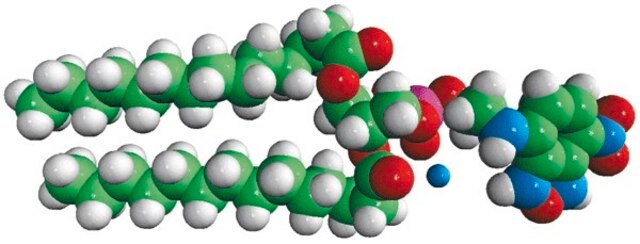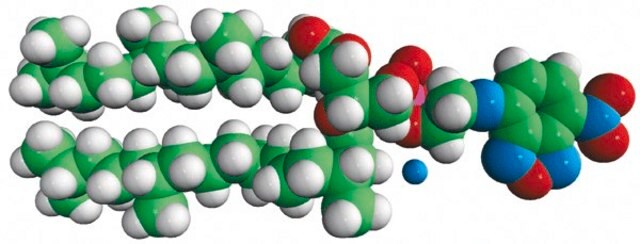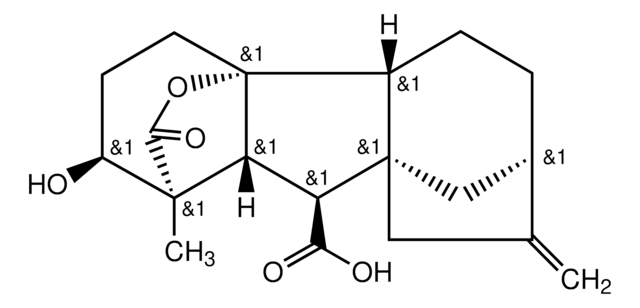810142C
Avanti
4ME 16:0 NBD PE (NBD-DPhPE)
1,2-diphytanoyl-sn-glycero-3-phosphoethanolamine-N-(7-nitro-2-1,3-benzoxadiazol-4-yl) (ammonium salt), chloroform
Synonim(y):
NBD-DPhPE
About This Item
Polecane produkty
Próba
>99% (TLC)
Postać
liquid
opakowanie
pkg of 1 × 1 mL (810142C-1mg)
producent / nazwa handlowa
Avanti Research™ - A Croda Brand 810142C
stężenie
1 mg/mL (810142C-1mg)
Warunki transportu
dry ice
temp. przechowywania
−20°C
Opis ogólny
Zastosowanie
Opakowanie
Informacje prawne
Hasło ostrzegawcze
Danger
Zwroty wskazujące rodzaj zagrożenia
Zwroty wskazujące środki ostrożności
Klasyfikacja zagrożeń
Acute Tox. 3 Inhalation - Acute Tox. 4 Oral - Aquatic Chronic 3 - Carc. 2 - Eye Irrit. 2 - Repr. 2 - Skin Irrit. 2 - STOT RE 1 - STOT SE 3
Organy docelowe
Central nervous system, Liver,Kidney
Klasa zagrożenia wodnego (WGK)
WGK 3
Certyfikaty analizy (CoA)
Poszukaj Certyfikaty analizy (CoA), wpisując numer partii/serii produktów. Numery serii i partii można znaleźć na etykiecie produktu po słowach „seria” lub „partia”.
Masz już ten produkt?
Dokumenty związane z niedawno zakupionymi produktami zostały zamieszczone w Bibliotece dokumentów.
Nasz zespół naukowców ma doświadczenie we wszystkich obszarach badań, w tym w naukach przyrodniczych, materiałoznawstwie, syntezie chemicznej, chromatografii, analityce i wielu innych dziedzinach.
Skontaktuj się z zespołem ds. pomocy technicznej


